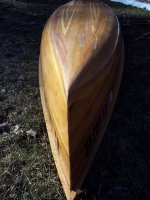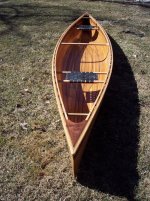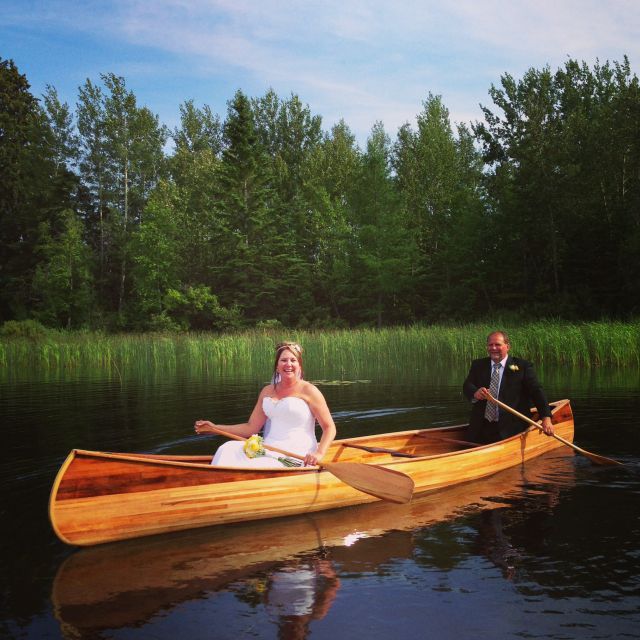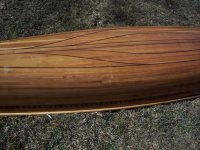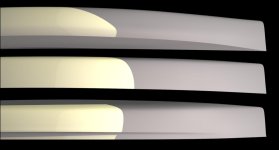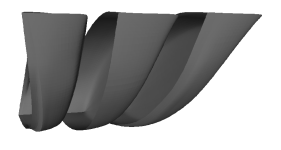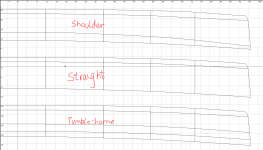I'll give my thoughts but take them with a grain of salt. None of my designs have more than a few miles on them yet and one, the tandem, hasn't even been in the water but I'm hoping to get a chance to paddle it this weekend. But going through the process of designing and building has made me think a lot harder about design and intended usage.
What I really like about designing your own boat is being able to build it specifically for you and how you intend to use it rather than most production boats which usually are, understandably, meant to handle a wider variety of conditions and paddlers
"Intended uses:
Day-tripping on sheltered flat water both as solo and tandem, maybe a little more open if the weather is good.
Tandem day-trip in current - tight quarters rivers such as Kickapoo & Pecatonica in SW WI. No Whitewater.
Some light over-nighting on similar waters, and larger flat rivers........I'm a fairly light paddler, about 135#, And most of my tandem partners would be similar, if not smaller."
No whitewater, no big water, no serious tripping, small paddlers, and no dogs. I'd say you're on the right track with a tandem in the 16'x33" wide ballpark. You might even be able to get by with less depending on how comfortable you and your partner are in "tippier" canoes.
All else being equal a 15'x33" canoe should be tippier than a 18'x33" canoe. With a longer canoe there's just simply more of it, especially in the center, which is the section that has the most effect on stability. So as you go shorter it's harder to cut back on the width. I don't know how tippy a 16'x33" canoe would be and tippyness is a very subjective thing anyway, but I don't think I'd have a problem with it. Your weight (and I assume shorter stature) should give you more stability.
If I remember correctly Jonathan Winters states that the sides have a bigger effect on stability than the bottom of the hull. A flat bottomed hull (which we usually think of as very stable) with vertical sides will have less stability than a very rounded bottom where the sides have constant flare. I've been surprised on more than one occasion when I run a stability check on a hull design and find that something I thought would decrease stability increased it instead.
Constant flare gives the most stability and sheds the most water. It also makes for the widest hull at the gunwales. Rounded tumblehome will give less stability since it starts to tuck in lower on the hull, sheds less water, looks the sexiest (IMO), is easier to build, and gives the narrowest gunwales. The sharply knuckled tumblehome seems like a compromise between the two. The flare is carried higher on the hull before tucking in, aiding in wave shedding and secondary stability.
Looking at production hulls it seems that canoes meant for lighter conditions and more efficient travel have rounded tumblehome (Bell Magic) while canoes that may see heavier loads or bigger water (Osprey) sacrifice some of the paddling comfort and use the sharply knuckled tumblehome. They both have their place, as do non-tumblehomed hulls, which seem fine on most tandem canoes.
When it comes to tumblehome on tandem canoes I don't think the bow paddler should really need any. The canoe already gets narrower as they reach forward to take a stroke; in your application especially since you shouldn't need an extremely high or wide bow to shed water. Tumblehome can help the stern paddler since the hull is flaring wider in front of them but even then it's probably not as important since he/she is sitting pretty far back where the hull is narrower anyway. I do think it looks very nice though. When I designed my tandem I started the tumblehome behind the bow paddler to leave the extra flare in the bow and give most of the benefit to the stern paddler.
I did paddle the slimmed version solo, but found that I needed to carry about 100# of sand as ballast! Possibly, a better paddler could have done without, but I simply couldn't settle in and trim that canoe well enough solo and still be able to get a paddle over the side.
If you're not going to be sitting in the center of the boat you're going to need ballast. The boat needs to be properly trimmed to be effective. Otherwise you've got a lightweight bow that you have no control over getting blown every which way. Some canoes, like my Bell Northstar, have a kneeling twart installed a little ahead of the stern seat. This gets you closer to the center of the canoe, requiring less ballast in the bow and the gunwales are narrower. Other people flip the canoe around and paddle it backwards from the bow seat. This does the same thing by getting you closer to the center and in a narrower spot in the hull. That means you can't have a canted front seat and most asymetrical hulls might not like being paddled that way.
Sitting in the center is difficult because the hull is so dang wide but at least it gives you control of the bow and stern. If in the center you're probably best off kneeling towards one side and paddling it heeled over for easier reach to your on side. Given your weight I'm guessing you don't have terribly long arms.
I don't like using a tandem as a solo. I have lots of solo canoes so that's what I'm used to. IMO if you're sitting well behind the center you don't have enough (any) control over the bow and the high sides of a tandem really act as a sail in the wind. Probably not so bad if you're loaded down for a trip but for day paddles with the wind blowing I find it very aggravating. All that being said lots of people paddle that way and seem to be pretty happy doing it. It's your boat and you're the only one you have to make happy so do whatever it takes. Look at 3x27 racing hulls to see how they give the stern paddler a narrow paddling station. You probably don't want to get that carried away but it's fun to play around with non traditional ideas. You could make the center of the boat relatively wide (36") for stability and really tuck it in at the stern for a narrow paddling station. Something like that should be easier for you since you're not worried about carrying a pair of 200 pound paddlers and two weeks worth of gear down rivers and across big windy lakes.
I don't know what to say about rocker. It's such a goofy measurement since there's no consensus about where to actually measure it. 1" of rocker to one person might be 3" of rocker to someone else depending on where it was measured. I just judge it by eyeball looking at the shape of the boat and the water line at different loads. I try to measure it consistently on the hulls I build so that I can hopefully make semi-direct comparisons between them but trying to compare them to other hulls on paper is questionable.
Have you tried Delftship? A nearly fully functional version is available for free. I paid for the full version hoping it would give me some extra goodies but none of them really panned out. I would have been fine sticking with the free version. I thought it had a pretty steep learning curve but after about 5 or 6 hours I felt pretty comfortable. I really like having it do the hull calculations for me at different loads and the Kaper program that's built into it is great for seeing how your changes affect efficiency through the water. It doesn't do stability calculations, at least not that I've been able to find, but I export the files to another free CAD program I found that does the calculations and that's been great as well. Can't remember the name now. If you're interested let me know and I'll get the name and tell you how to import the file and run the calculations. Very easy.
These are the stability calculations from my tandem:
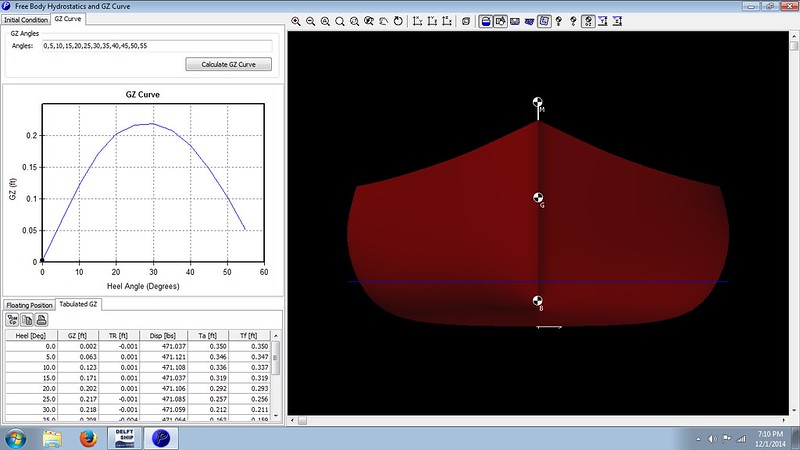 V4 stability
V4 stability by
Alan Gage, on Flickr
 V4_2 stability
V4_2 stability by
Alan Gage, on Flickr
Yours looks great and it sounds like you've got things well in hand. Always lots of fiddling and tweaking. Good luck!
Alan

